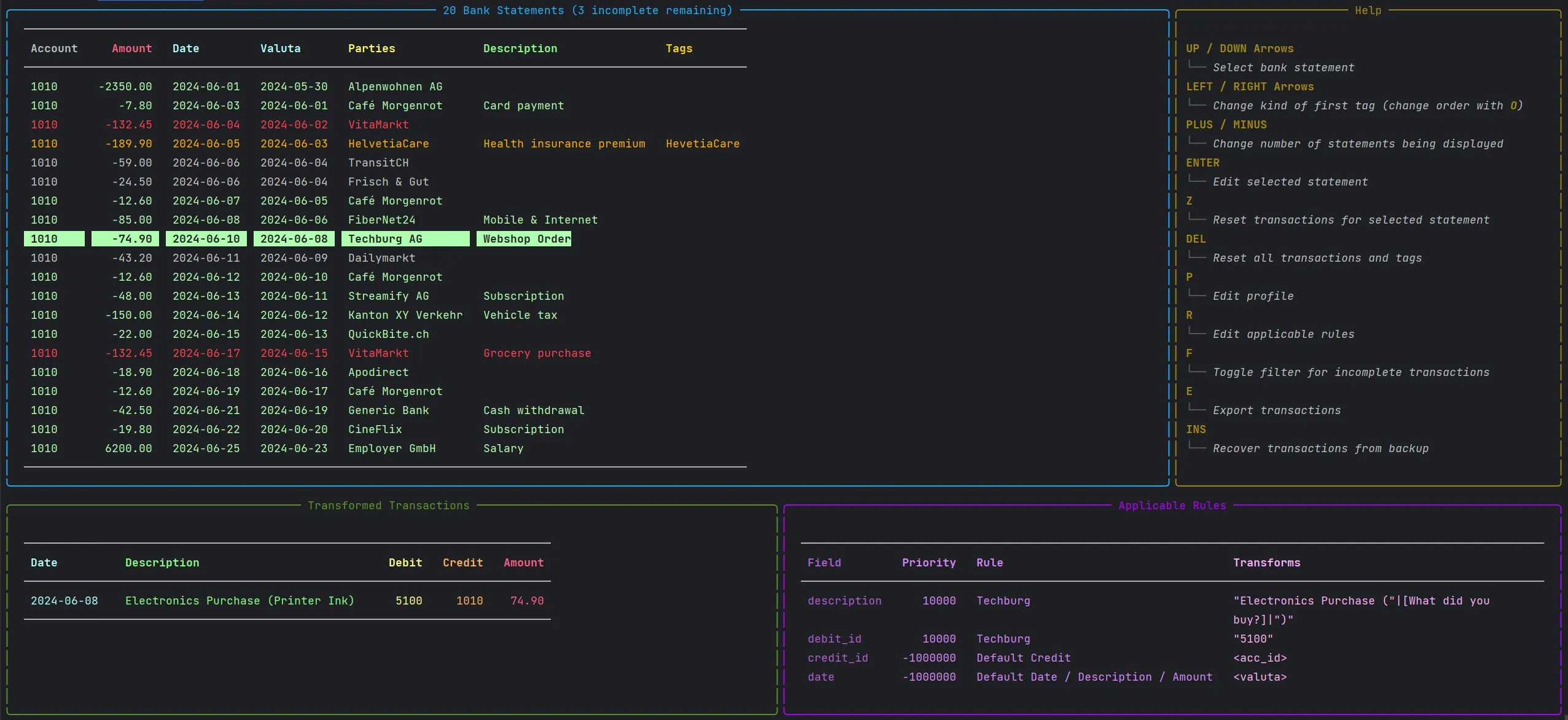Adaptive Accountant

Modern online banking solutions automatically categorize transactions to give customers some idea on how they spent their money. This approach is prone to incorrect results and cannot be customized, making it unsuitable for serious and confident bookkeeping.
I solved these problems by creating the Adaptive Accountant, a tool that automatically processes your bank statements into structured entries compatible with double-entry bookkeeping software.
Target Users
Designed for individuals and small businesses (KMUs) who want to speed up double-entry bookkeeping and increase the confidence in its correctness.
Advantages
- Automatically maps bank statements to accounting entries
- Custom rules produce consistent results, reducing manual work and errors
- Human-in-the-loop, but only when needed
- Supports common bank statement formats
- Results can be directly imported into accounting software
Mapping Rules
Users define the logic and are prompted for input when needed, ensuring confidence in every mapped transaction.
Bank statements contain several fields, such as the transaction amount, date, involved parties and a description.
The output entries consist of a date, description, debit / credit account ID and the transaction amount.
The user profile defines a set of rules that govern how each statement is mapped to one or more entries. Each rule consists of conditions, transforms and a priority.
INFO
Mapping rules are inspired by firewall and packet routing policies.
Conditions
One or more conditions based on fields in the bank statement can be specified.
For instance, a rule could specify the conditions that the amount must be larger than 500.00 and the description must contain the string “health insurance”.
Transforms
When conditions match, transforms define how to convert the statement into the fields of a ledger entry. For each target field, only the transform of the highest priority matching rule is applied.
Transforms can combine constant values (e.g. the ID of the expense account for health insurance) with dynamic values. These can come either from statement fields or are requested as input from the user. This is particularly useful if the description in the statement is missing, not suitable or too generic.
Implementation
I developed the initial version of the Adaptive Accountant with Python and the Rich package to achieve a beautiful console based UI. The user profile is specified in JSON, making it independent of the actual application.
TIP
Stay tuned for updates, as I plan to extend this prototype to a fully-fledged application with a modern GUI, automatic rule generation and more.